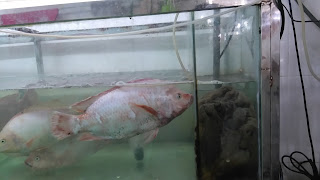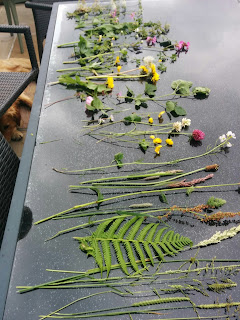A little corner of Paris in Hanoi
'Let's meet outside the 'big church' near the lake' I said.
What a surprise I got when I arrived.
On previous visits to Hanoi I had somehow managed to miss
St. Joseph's cathedral. I must have been too busy dragging around the 'big'
tourist spots or losing my way in the maze of streets of the old quarter. But, this
time, determined to find the 'big church'
I arranged to meet a friend there to do some sketching together. I was
early so I was able to soak in the unexpected atmosphere of this quiet corner
of the capital city for a little while.
As soon as I entered the secluded square which is dominated
by the modest facade of the church, I was transported back twenty years to a
misty evening spent in Montmartre in Paris. The church bells marked the quarter
hour. There is something about the scale of the buildings, the layout of the
streets and the crooked trees that is reminiscent of that romantic quarter of
Paris that was the haunt of so many artists. There are the same muted colours of
green, grey and browns and I began to imagine that this collection of streets
and bars in Hanoi could easily be the centre of a modern day art movement for
the talented young artists of modern Vietnam if they wished.
The church itself is rather underwhelming in scale. It is
styled on the massive Notre Dame cathedral in Paris, as is Notre Dame Cathedral
in Saigon. It was built in the 1880s on the site of the demolished Bao Thien
Pagoda, an ancient and sacred meeting place which, coincidentally, had been
constructed about the same period as the Paris cathedral.
In front of St. Joseph's is a charming railed garden that is
home to a small statue of the virgin Mary 'Queen of Peace'. But I suspect that this
corner of Hanoi has not always been a haven of tranquility.
There must have been protests and riots when it was declared
that the old Pagoda was to be demolished to make way for the 'new religion' of
the invading French. Hearts will have been broken as 700 years of tradition and
community was so wilfully destroyed. Later, in 1954 when the Viet Minh took control
of Hanoi, the church and all its property was confiscated. It was over 40 years before the church was, once
again, permitted to reopen for services. Then, in 2008 there were more protests,
this time by Catholic priests who demanded the state return land that had previously
been occupied by the church. Maybe it is the fear of more conflict that caused
the church and the little Madonna to both be surrounded by protective railings.
Today, this square is peaceful. The street that leads to the
church( Nha Tho) has a collection of international restaurants, local cafes and
shops housed in two slightly faded rows of pretty shop houses and many have
been there for many years. My friend says that nothing much changes in this
neighbourhood where he founded his business nearly 20 years ago.
The bells
chime the hour with that flat two-tone of every church in France, big or small.
It all adds to that haunting feeling that I could easily be walking those
cobbled streets of Montmartre once more.
























































